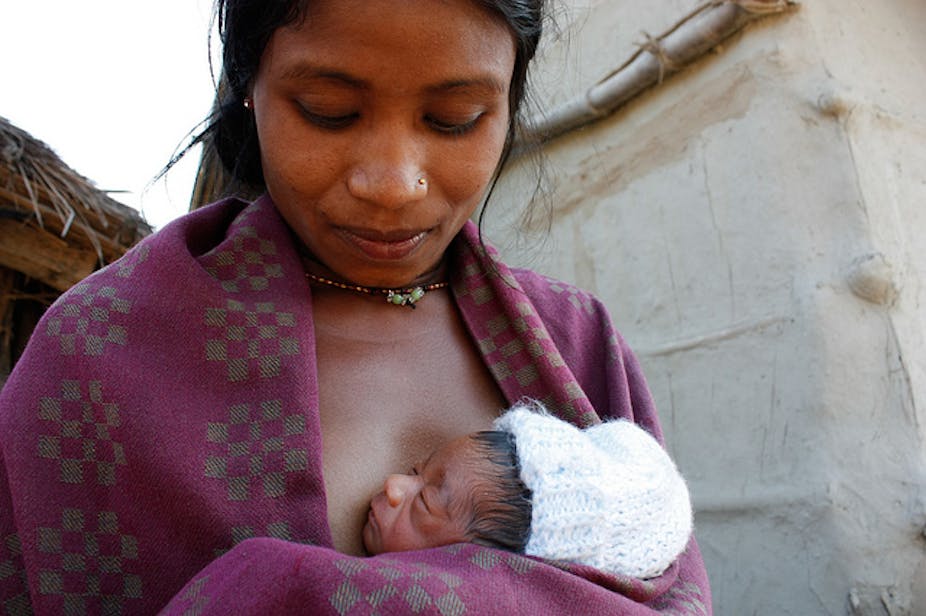The arrival of a healthy newborn baby is a cause for happiness and hope. But this is not always the case in the Western Pacific region, where a newborn dies every two minutes.
Almost one third (30%) of deaths in young children occur in the first day of life and two-thirds in the first three days.
Newborns die from being born too soon (prematurity) or too small (low birth weight), from severe infections, or from lack of oxygen around the time of birth (asphyxia).
The World Health Organization (WHO) and UNICEF this week brought together delegates from member states in the region to agree on an Early Essential Newborn Care plan, which aims to eliminate preventable newborn deaths in the Western Pacific region.
The three targets are to improve quality, increase skilled birth attendance and reduce newborn mortality to 10 per 1,000 births or less by 2020.
The region covers 37 countries in the Pacific and East Asia. China, Philippines, Cambodia, Lao People’s Democratic Republic, Papua New Guinea and Vietnam together contribute 97% of newborn deaths in the region.
What’s going wrong?
Poor practices in the first 24 hours of life can lead to illness or even fatal complications. No one deliberately tries to hurt babies, but many newborns are separated from their mothers, so they get cold and cannot feed naturally.
Many have their throats unnecessarily suctioned leading to stress; and some common practices expose them to hospital-acquired infections with antibiotic-resistant bacteria.
Some babies have their umbilical cord clamped immediately after they are born, despite good evidence that if there can be a delay in cord clamping by over a minute after birth, the baby is less likely to develop anaemia, a common problem in children in the Asia Pacific region.
Many babies are fed artificial formula and miss out on the highly protective natural immunity that comes from their mother’s milk, especially that provided in the first days of life. The lack of natural immunity from breast-feeding puts babies at great risk of severe infections and malnutrition.
Early essential newborn care
Birth is a normal physiological and social event. Immediately at birth, babies should be delivered onto the abdomen or chest of the mother, then dried thoroughly to prevent them getting cold, then cuddled close to their mother. There is strong scientific support that this contact keeps the baby warm and encourages natural breast-feeding; left alone, mothers will instinctively do this.
Protecting and prolonging this “first embrace” between mother and baby is key to the newly released newborn care action plan.
The plan also outlines ongoing high-quality care of high risk newborns: those who are born too soon or too small, or who are sick from other conditions. It also emphasises hand washing and more rational antibiotic usage for the prevention of hospital-acquired infections and prevention of antibiotic resistance.
Put together, these methods signal a less invasive approach to newborn care for the majority of women in the region. But doing the basic things well would have a big impact on the health of their newborns.

Putting the plan into practice
There is great inequity in many countries in the Western Pacific region – the poorest populations have death rates for newborns that are up to three times higher than in wealthy areas. In some countries, this is because many babies are born at home, without the support of a health worker trained in delivering babies.
To address this inequality, we need to ensure that a skilled birth attendant is available to mothers in the poorest areas of all countries and that newborn care strategies are able to be applied, especially the first embrace.
This will require increased commitment from governments to neonatal care, an increased commitment to addressing equity gaps (sometimes called a “pro-poor” approach), and increased recognition and funding from richer countries in the region.
Countries with very high neonatal death rates in the region (where it may not be possible to achieve the goal) are encouraged to commit to a goal that represents a rate of reduction in neonatal deaths that is two to three times greater than in the previous two decades. These countries will need the greatest support.
In many countries, newborn births, illness or deaths are rarely recorded. This will also have to change.
The global focus and commitment to the United Nations’ Millennium Development Goals over the last decade has seen considerable success in reducing deaths in children beyond one month of age. But as we’re nearing the end of this target period, and looking beyond, we now need to focus more on mothers and newborn babies.
This article was co-authored by Howard Sobel, Maternal and Child Health and Nutrition Team Leader at the Western Pacific Regional Office of WHO in the Philippines.

